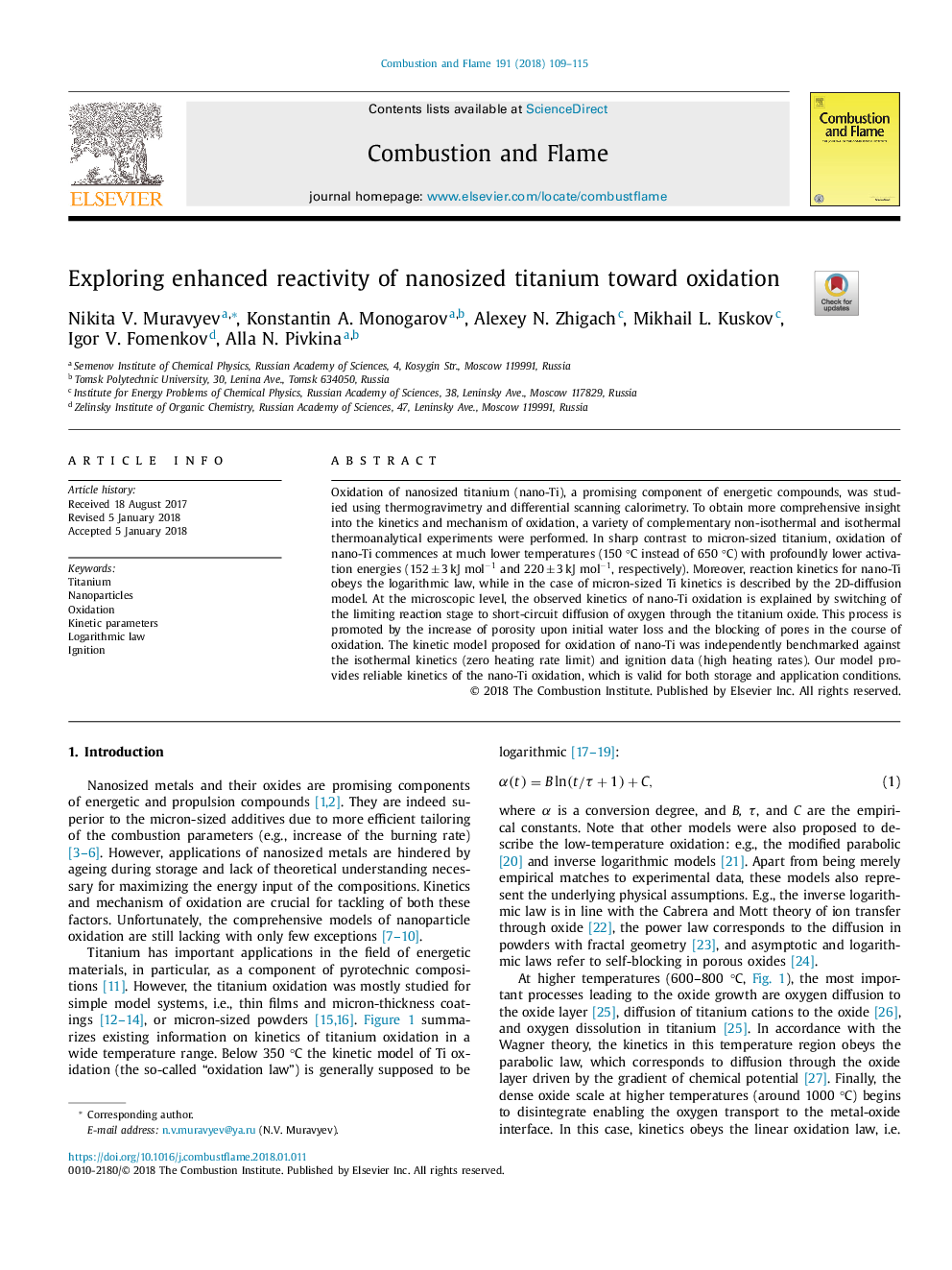| Article ID | Journal | Published Year | Pages | File Type |
|---|---|---|---|---|
| 6593737 | Combustion and Flame | 2018 | 7 Pages |
Abstract
Oxidation of nanosized titanium (nano-Ti), a promising component of energetic compounds, was studied using thermogravimetry and differential scanning calorimetry. To obtain more comprehensive insight into the kinetics and mechanism of oxidation, a variety of complementary non-isothermal and isothermal thermoanalytical experiments were performed. In sharp contrast to micron-sized titanium, oxidation of nano-Ti commences at much lower temperatures (150 °C instead of 650 °C) with profoundly lower activation energies (152â¯Â±â¯3â¯kJ molâ1 and 220â¯Â±â¯3â¯kJ molâ1, respectively). Moreover, reaction kinetics for nano-Ti obeys the logarithmic law, while in the case of micron-sized Ti kinetics is described by the 2D-diffusion model. At the microscopic level, the observed kinetics of nano-Ti oxidation is explained by switching of the limiting reaction stage to short-circuit diffusion of oxygen through the titanium oxide. This process is promoted by the increase of porosity upon initial water loss and the blocking of pores in the course of oxidation. The kinetic model proposed for oxidation of nano-Ti was independently benchmarked against the isothermal kinetics (zero heating rate limit) and ignition data (high heating rates). Our model provides reliable kinetics of the nano-Ti oxidation, which is valid for both storage and application conditions.
Related Topics
Physical Sciences and Engineering
Chemical Engineering
Chemical Engineering (General)
Authors
Nikita V. Muravyev, Konstantin A. Monogarov, Alexey N. Zhigach, Mikhail L. Kuskov, Igor V. Fomenkov, Alla N. Pivkina,
